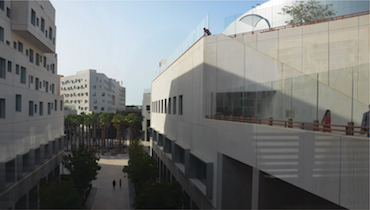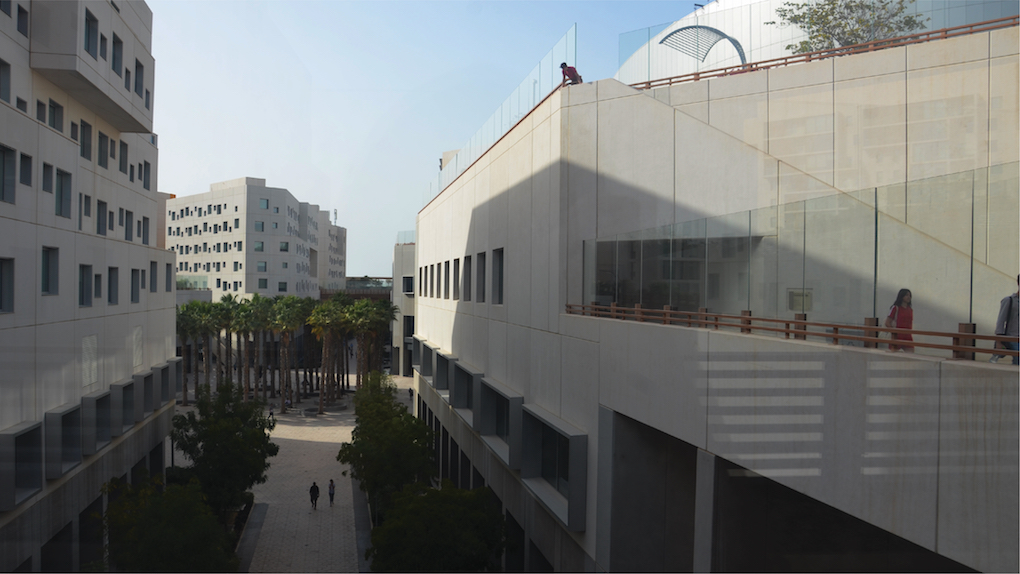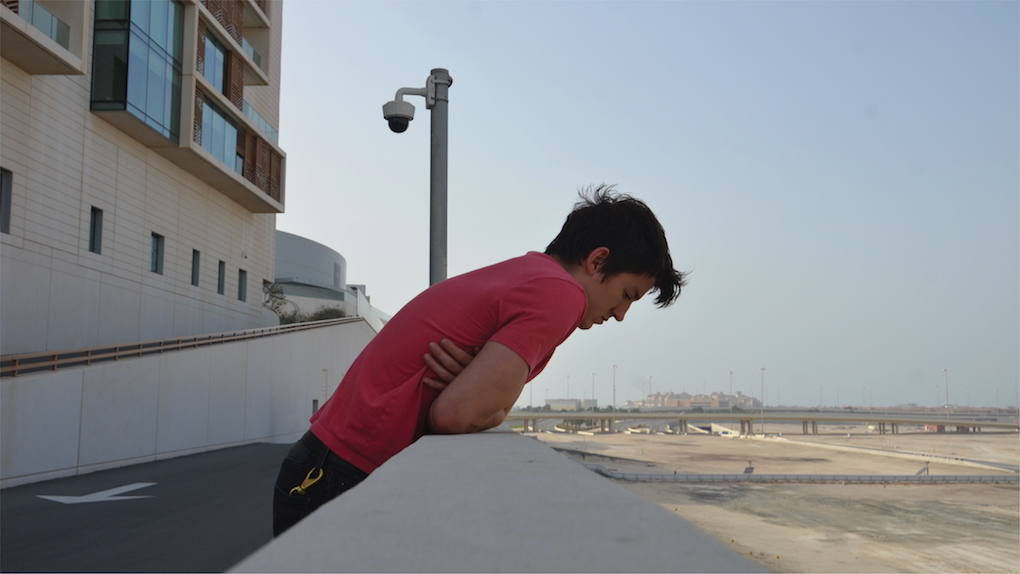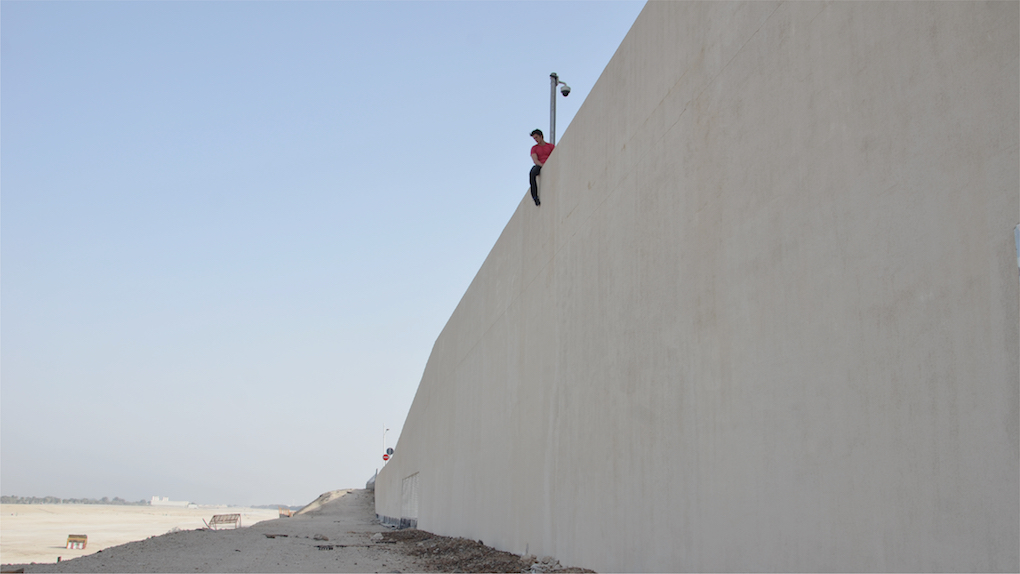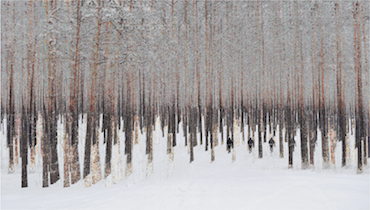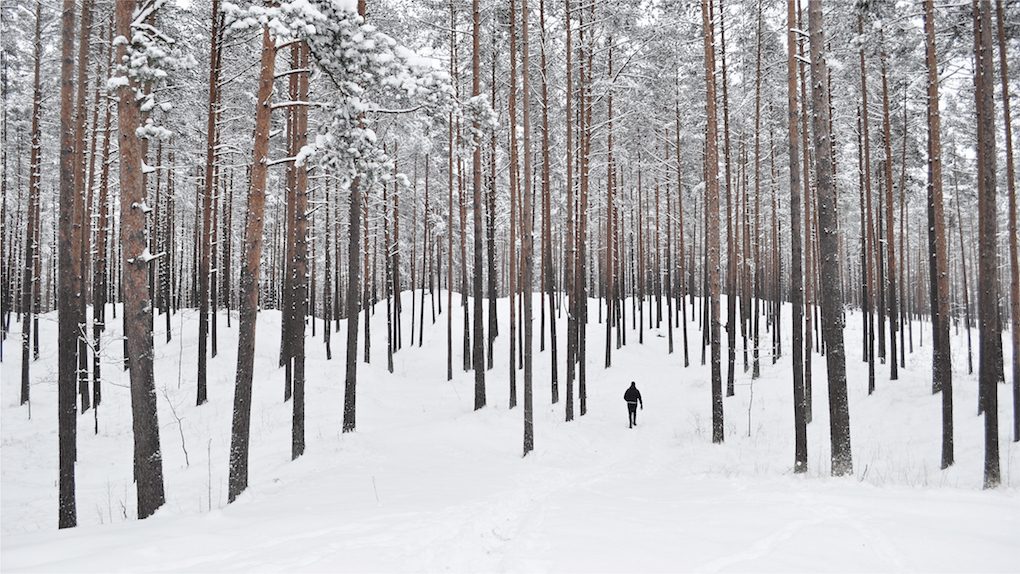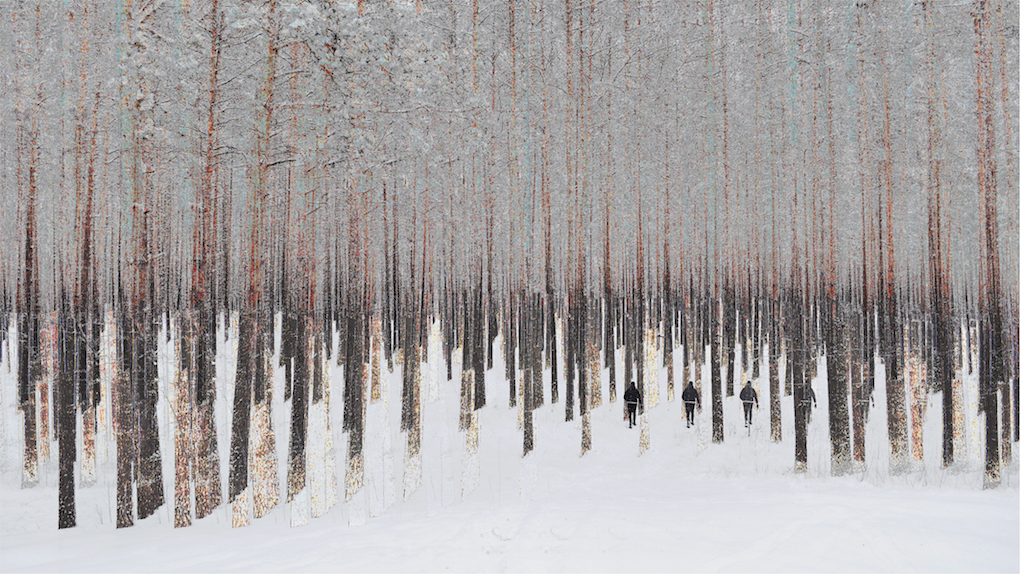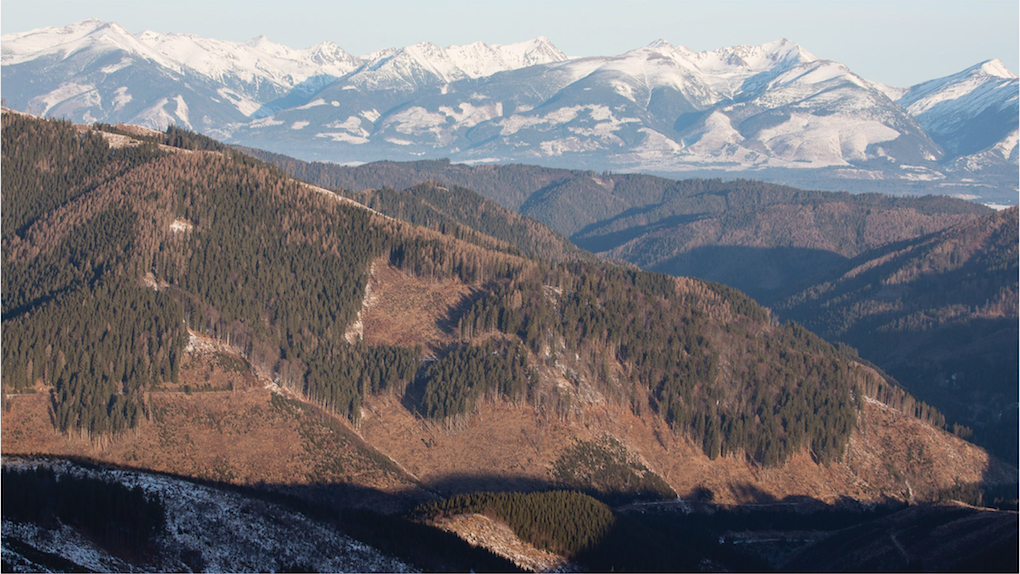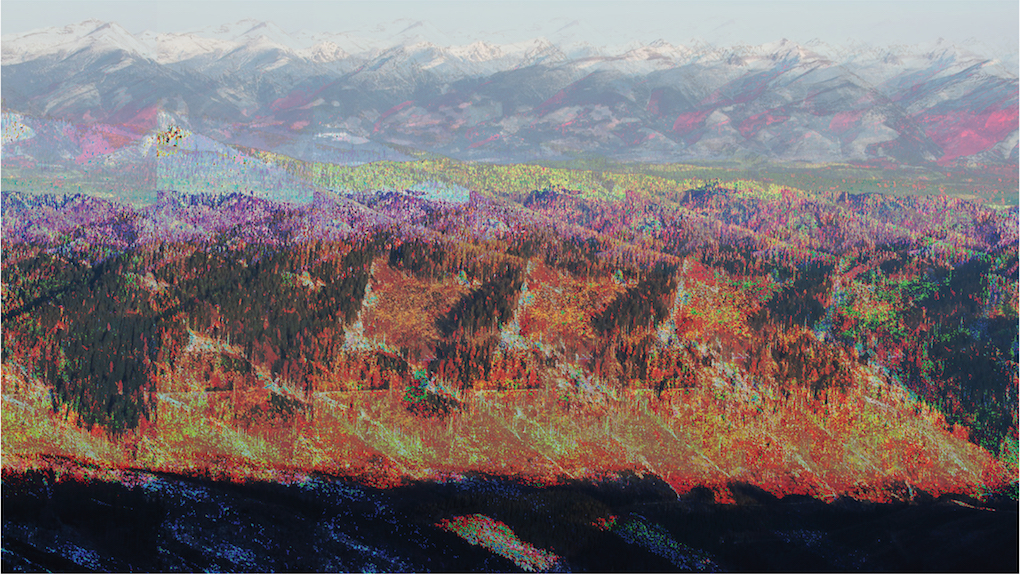This project explores the strategic positioning of suicide barriers in the NYUAD campus.
Luize Rieksta, Maria Calderon, Will Mlekush
Description
For this piece, we drew inspiration from Alex Villar’s “Temporary Occupations”, which shows how the infrastructure and architecture of a space enforce movement and determine spatial codes. We decided to adapt Villar’s concept to our campus and its infrastructure, more specifically – the suicide barriers that NYUAD implemented after the transition to the Saadiyat campus. This adaptation focuses Villar’s concept on the social issue of suicide. Positioning ourselves in the vulnerable spaces between these barriers, we interrogate such responsive spatial interventions, asking questions of purpose, effectiveness, and agency.
Why place suicide barriers in some areas and not others? There are notable gaps near the Torch Club and around various sets of stairs on campus. There are also gaps on the high walls behind the Campus Center, an area of low pedestrian traffic. Surveillance cameras were also placed around most of the non-barred areas. What benefit comes from these cameras’ placement? How do these barriers contribute to dealing with suicide? What constitutes an effective intervention? How does the presence of these barriers affect the behaviors of residents and visitors?

